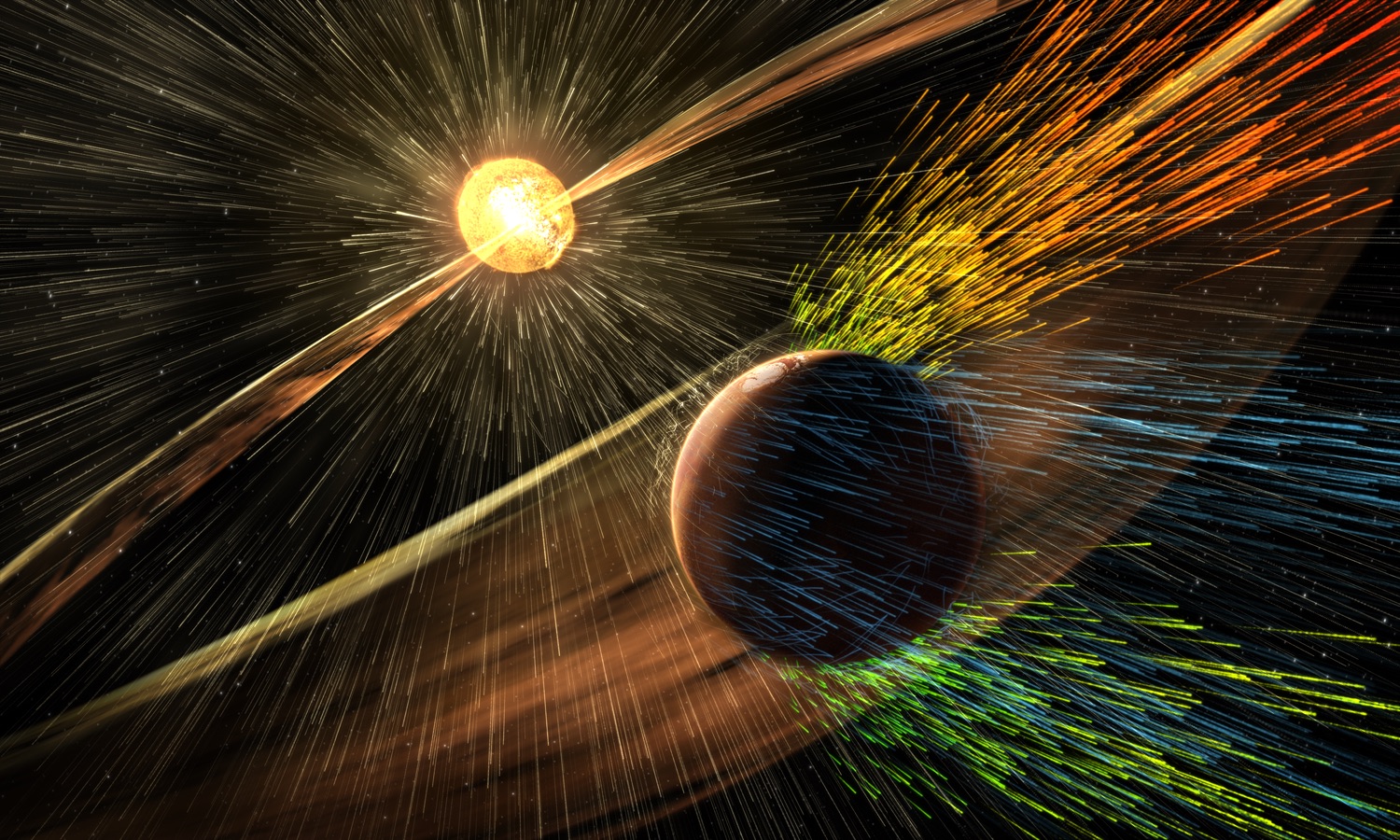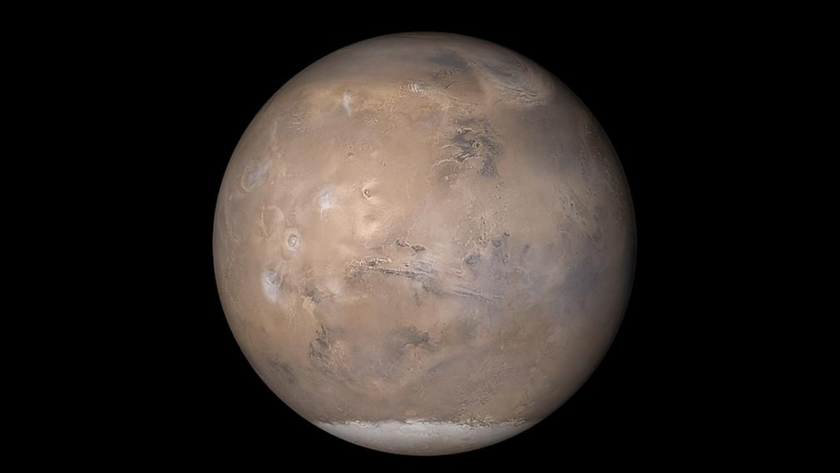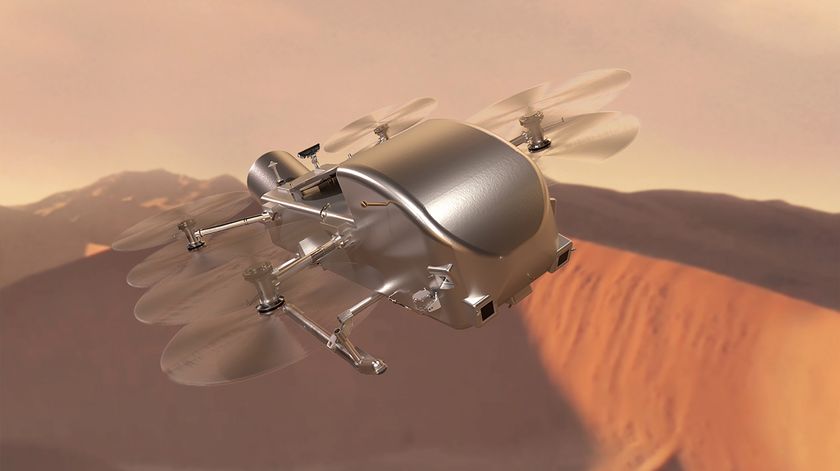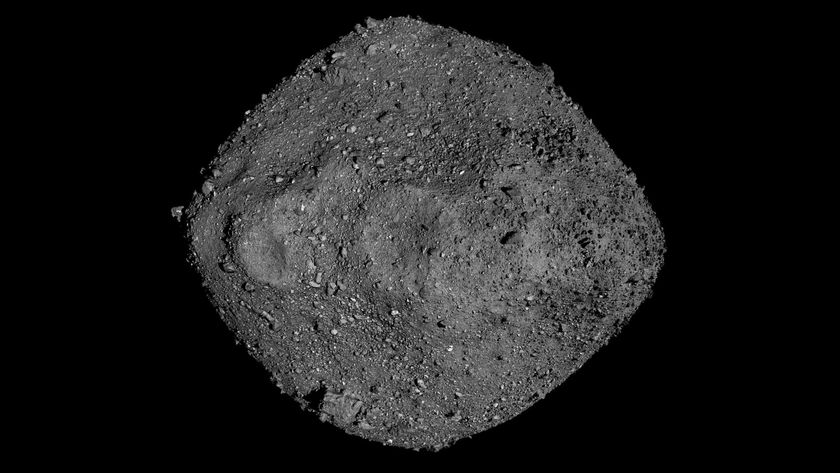Clingy Alien Planets May Fling Their Moons Out of Orbit

Alien planets that orbit especially close to their stars have a bigger chance of losing their moons, which may reduce the chances that habitable alien moons will survive for very long around those planets, a new study finds.
In the past 20 years or so, astronomers have confirmed the existence of more than 3,400 worlds outside Earth's solar system. These discoveries have revealed that many exoplanets are very different from those seen in Earth's solar system; for instance, about 40 percent of exoplanets discovered to date orbit their stars at least 10 times closer than Earth orbits the sun. (In comparison, Mercury is at most about three times closer than Earth is to the sun.)
In Earth's solar system, there are far more moons than planets, with Jupiter alone having at least 67 moons. Previous work has suggested that exomoons, or moons around exoplanets, could be as big or larger than Earth. If an exoplanet happens to lie in a star's habitable zone — the area in which worlds have surface temperatures warm enough to host liquid water — then an Earth-size exomoon around such a planet could potentially harbor life. [Alien Life Possible on Exoplanet Moons]
However, so far, exomoons have eluded confirmed discovery, said Ji-Wei Xie, an astronomer at Nanjing University in China and a co-author of the new study. He and his colleagues wanted to uncover a potential explanation for why exomoons remain elusive. One possibility is that exomoons are difficult to see and thus simply haven't been detected yet. But another possibility, Xie said, is that, for some reason, exomoons are rare around the exoplanets that astronomers have spotted.
Most of the exoplanets that scientists have detected so far are close to their host stars, because those types of planets are easier to spot using the planet-hunting strategies astronomers have been able to employ. For instance, the radial velocity method looks for repeated wobbles in a star's movements that are signs of a planet's gravitational pull yanking it back and forth, and this quivering is bigger the closer an exoplanet is to its star. In addition, the transit method looks for dips in a star's brightness whenever a planet crosses in front of it, and such darkening is more frequent the nearer an exoplanet is to its star.
Planets that orbit close to their stars are naturally exposed to more high-energy radiation than ones farther away. The authors of the new paper reasoned that, over time, those higher levels of radiation might blast away the atmospheres of exoplanets that are close to their stars; in fact, this idea has popped up in other exoplanet studies as well. Such a "photo-evaporation" process could, in principle, make the orbits of moons around those exoplanets unstable, Xie said.
To see how strong an effect a star might have on an exoplanet's moons, Xie and his colleagues simulated a range of Neptune-like gas giant planets about 14 to 20 times the mass of Earth, each of which orbited a star about 10 times closer than Earth does the sun. The planets started out with up to 500 moons. The scientists simulated what would happen if photo evaporation gradually eroded away the gas planet's atmosphere, reducing the planet's total mass by half over time.
Get the Space.com Newsletter
Breaking space news, the latest updates on rocket launches, skywatching events and more!
The scientists found that photo evaporation could play a major role in the fate of an exoplanet's moons. As photo evaporation caused the simulated exoplanet to lose mass, the planet's gravitational pull weakened and the orbits of the exomoons grew and became more eccentric, or oval-shaped. Eventually, many of those orbits became unstable, meaning the moons could exit their orbits around those planets altogether. Xie said the simulations could leave few or no moons around the planets.
In the scenario where planets had 500 small moons, the researchers found that only about a quarter of the moons still remained in orbit around their worlds by the end of the simulations. About half of these moons collided with their planets, while a quarter of the moons escaped their planets to become new planet-like objects circling their stars. In the simulations, some of the moons flew away on trajectories that could make them go on to become free-floating "rogue planets" that wander the galaxy.
In scenarios that included larger moons with masses up to twice that of Earth, even fewer moons remained in stable orbits around their evaporating planets. In these scenarios, in addition to escaping from or colliding with their planets, moons also collided with one another, the researchers found.
All in all, these findings "can help guide the future search for exomoons," Xie said. For instance, their findings suggest that exomoon hunters should avoid exoplanets that are very close to their stars. This holds especially true for red dwarf stars, which are luminous with X-rays that enhance photo evaporation, he said.
As for whether habitable exomoons are possible, Xie noted that sun-like stars possess habitable zones that are about as far away from them as Earth is from the sun. At such distances, "the photo-evaporation effect is very limited, and thus our findings will not apply to them," Xie said.
However, red dwarfs, which constitute up to 70 percent of the stars in the cosmos, are up to 50 times fainter than the sun, and so their habitable zones are much closer to them. "Our findings would suggest that there would be less habitable moons around red dwarfs due to the photo-evaporation effect," Xie said.
The scientists detailed their findings online Dec. 1 in The Astrophysical Journal.
Follow Charles Q. Choi on Twitter @cqchoi. Follow us @Spacedotcom, Facebook and Google+. Original article on Space.com.
Join our Space Forums to keep talking space on the latest missions, night sky and more! And if you have a news tip, correction or comment, let us know at: community@space.com.

Charles Q. Choi is a contributing writer for Space.com and Live Science. He covers all things human origins and astronomy as well as physics, animals and general science topics. Charles has a Master of Arts degree from the University of Missouri-Columbia, School of Journalism and a Bachelor of Arts degree from the University of South Florida. Charles has visited every continent on Earth, drinking rancid yak butter tea in Lhasa, snorkeling with sea lions in the Galapagos and even climbing an iceberg in Antarctica. Visit him at http://www.sciwriter.us


